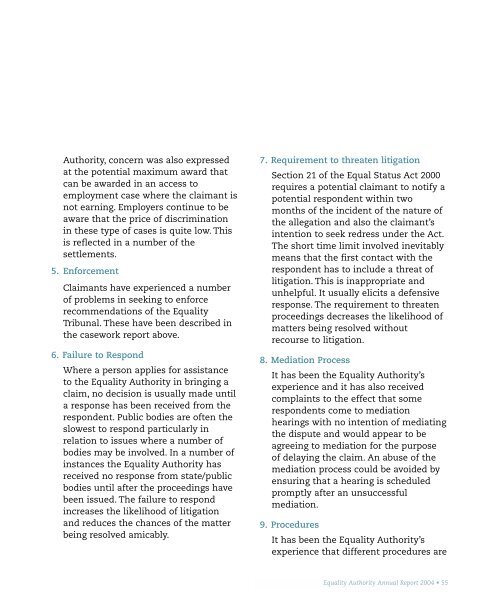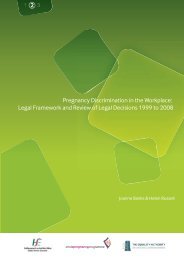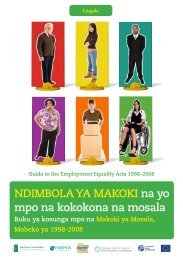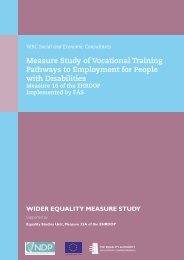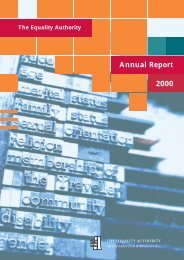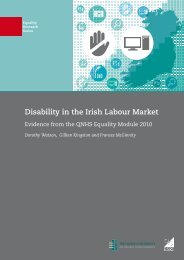Annual Report 2004.pdf - Equality Authority
Annual Report 2004.pdf - Equality Authority
Annual Report 2004.pdf - Equality Authority
- No tags were found...
Create successful ePaper yourself
Turn your PDF publications into a flip-book with our unique Google optimized e-Paper software.
<strong>Authority</strong>, concern was also expressedat the potential maximum award thatcan be awarded in an access toemployment case where the claimant isnot earning. Employers continue to beaware that the price of discriminationin these type of cases is quite low. Thisis reflected in a number of thesettlements.5. EnforcementClaimants have experienced a numberof problems in seeking to enforcerecommendations of the <strong>Equality</strong>Tribunal. These have been described inthe casework report above.6. Failure to RespondWhere a person applies for assistanceto the <strong>Equality</strong> <strong>Authority</strong> in bringing aclaim, no decision is usually made untila response has been received from therespondent. Public bodies are often theslowest to respond particularly inrelation to issues where a number ofbodies may be involved. In a number ofinstances the <strong>Equality</strong> <strong>Authority</strong> hasreceived no response from state/publicbodies until after the proceedings havebeen issued. The failure to respondincreases the likelihood of litigationand reduces the chances of the matterbeing resolved amicably.7. Requirement to threaten litigationSection 21 of the Equal Status Act 2000requires a potential claimant to notify apotential respondent within twomonths of the incident of the nature ofthe allegation and also the claimant’sintention to seek redress under the Act.The short time limit involved inevitablymeans that the first contact with therespondent has to include a threat oflitigation. This is inappropriate andunhelpful. It usually elicits a defensiveresponse. The requirement to threatenproceedings decreases the likelihood ofmatters being resolved withoutrecourse to litigation.8. Mediation ProcessIt has been the <strong>Equality</strong> <strong>Authority</strong>’sexperience and it has also receivedcomplaints to the effect that somerespondents come to mediationhearings with no intention of mediatingthe dispute and would appear to beagreeing to mediation for the purposeof delaying the claim. An abuse of themediation process could be avoided byensuring that a hearing is scheduledpromptly after an unsuccessfulmediation.9. ProceduresIt has been the <strong>Equality</strong> <strong>Authority</strong>’sexperience that different procedures are<strong>Equality</strong> <strong>Authority</strong> <strong>Annual</strong> <strong>Report</strong> 2004 • 55


